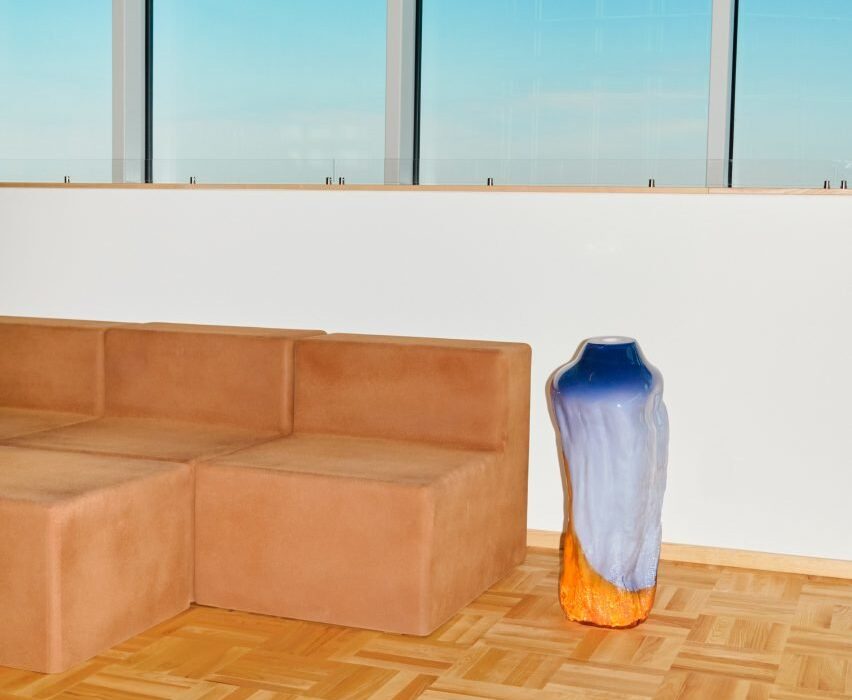Local studio Lab La Bla sourced diabase rock from a nearby mine and created seating from MDF and recycled cork for the interior of energy company E.ON’s headquarters in Malmö, Sweden.
Lab La Bla designed the headquarters’ reception area, coat room and lounge area, while also creating furniture, sculptures and other accessories across nine floors of the 22,000-square-metre building.
The studio aimed to create a sequence of space that had variety, while taking inspiration from sources including airport terminals.
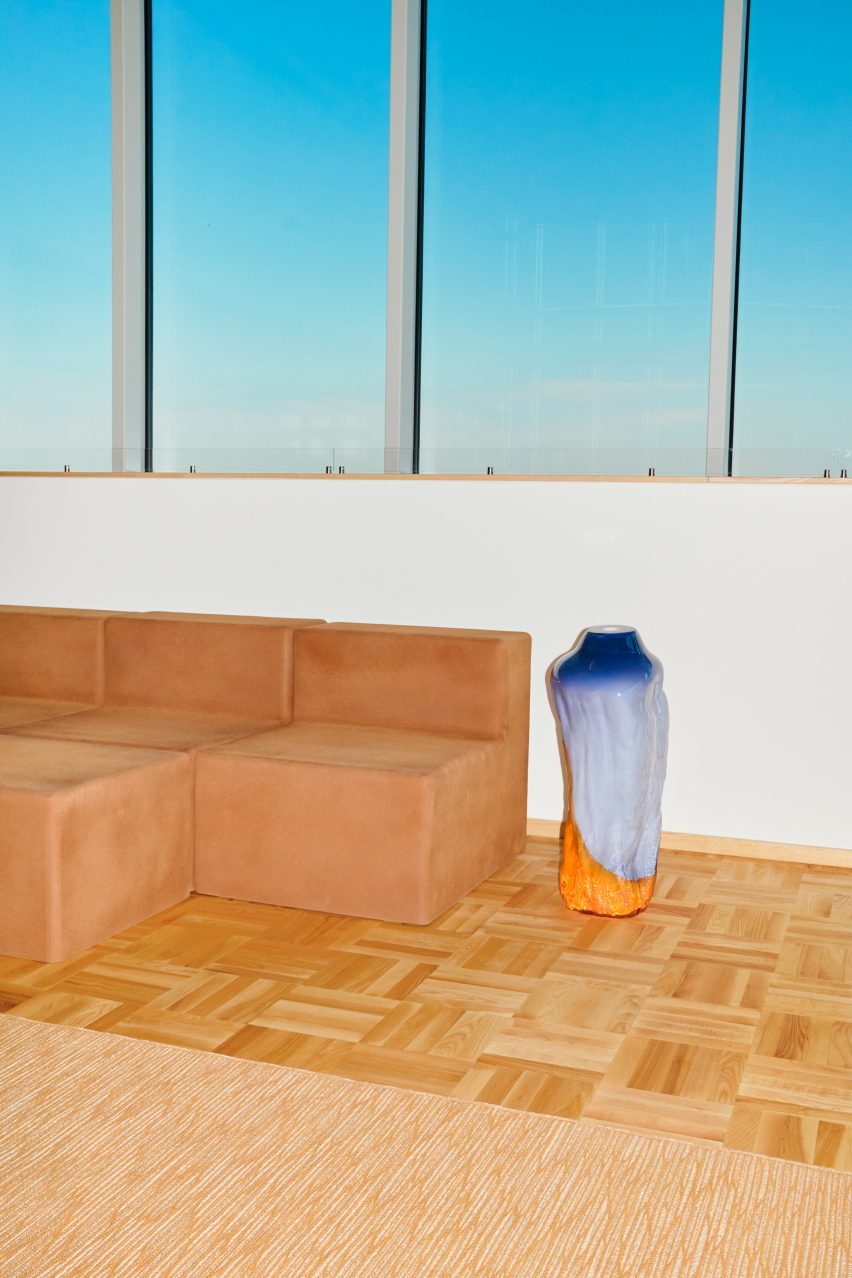
“Creating work for an office that houses 1,500 employees is both challenging and inspiring,” co-founders Axel Landström and Victor Isaksson Pirtti told Dezeen.
“It’s about creating spaces and functions that cater to the many while offering a mix of focus, creative and social environments, so it’s really about designing for the masses without making it boring or generic,” they added.
“There’s a current fascination about airport interiors in the studio, so for the reception area we drew from that source of inspiration.”
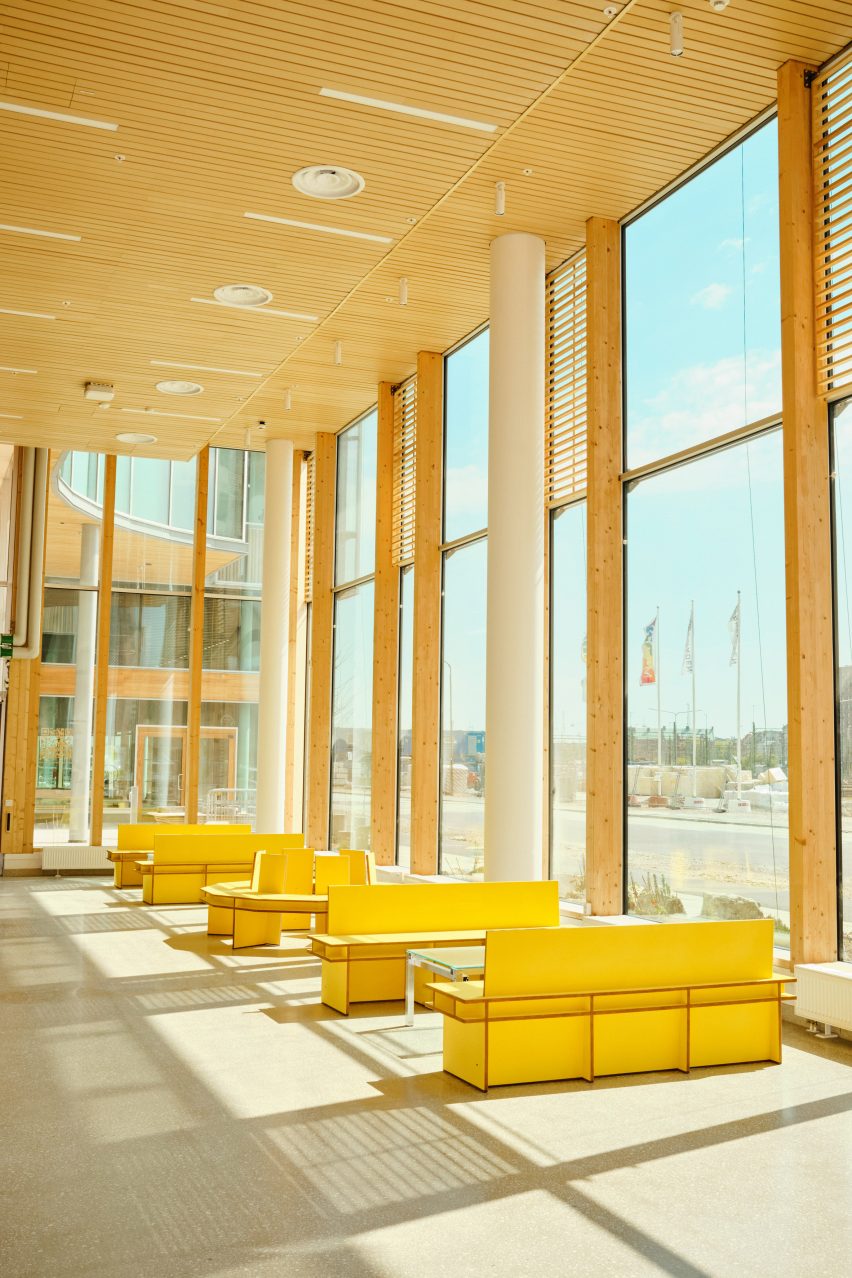
In the reception area, the studio created a set of sunny yellow furniture made from medium-density fibreboard (MDF) covered in nylon fiber.
“The overall project for us is sort of a reaction to dysfunctional and non-sustainable processes inherent within our industry,” the studio explained.
“For the reception area MDF and screws have been coated with repurposed nylon fiber using a technology commonly seen in the automotive industry, resulting in furniture that celebrates leftover material but without compromising on durability.”
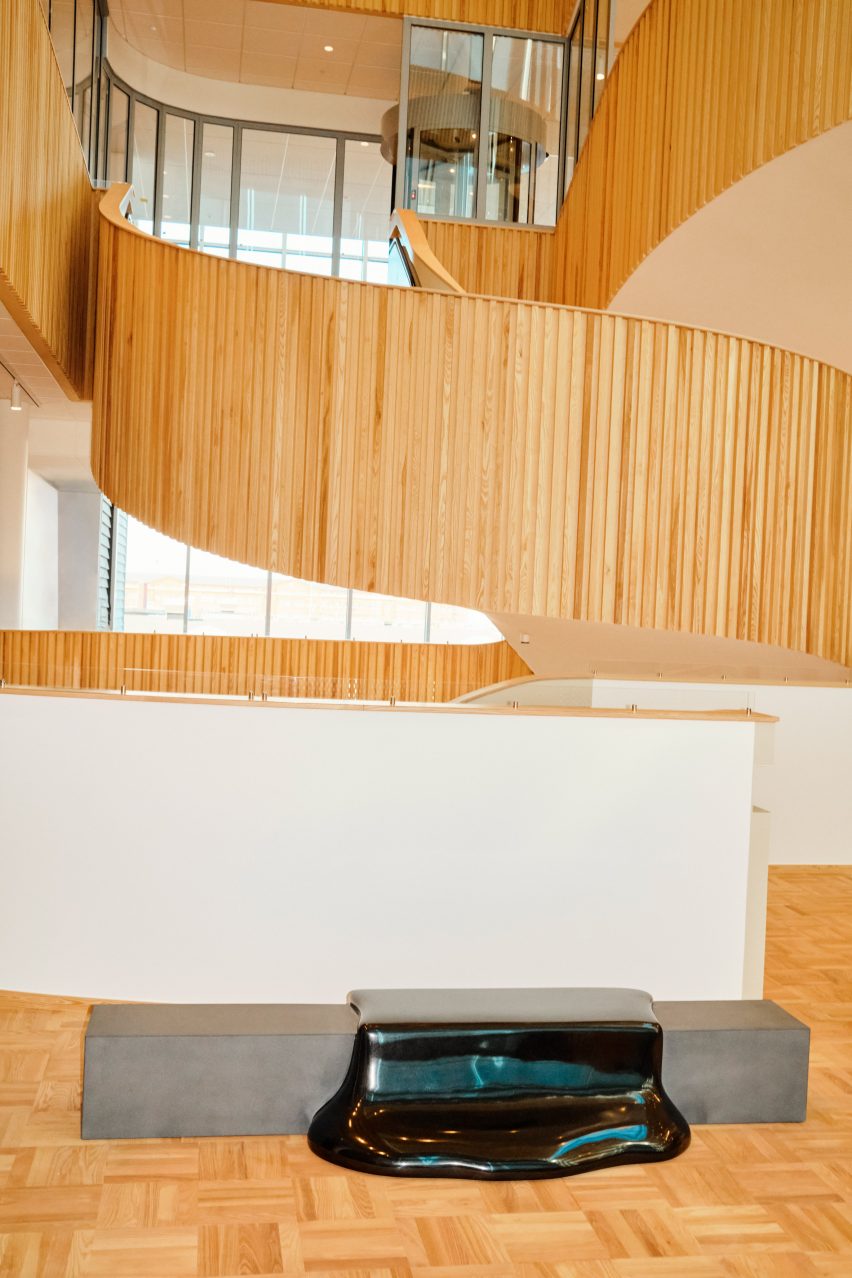
For the building’s central atrium, Lab La Bla designed an unusual bench that features a gloopy stone decoration resembling an oil spill.
This was created using diabase stone, which is famous for its blackness and was mined nearby in southern Sweden. The process of creating it was informed by its setting at an energy company headquarters.
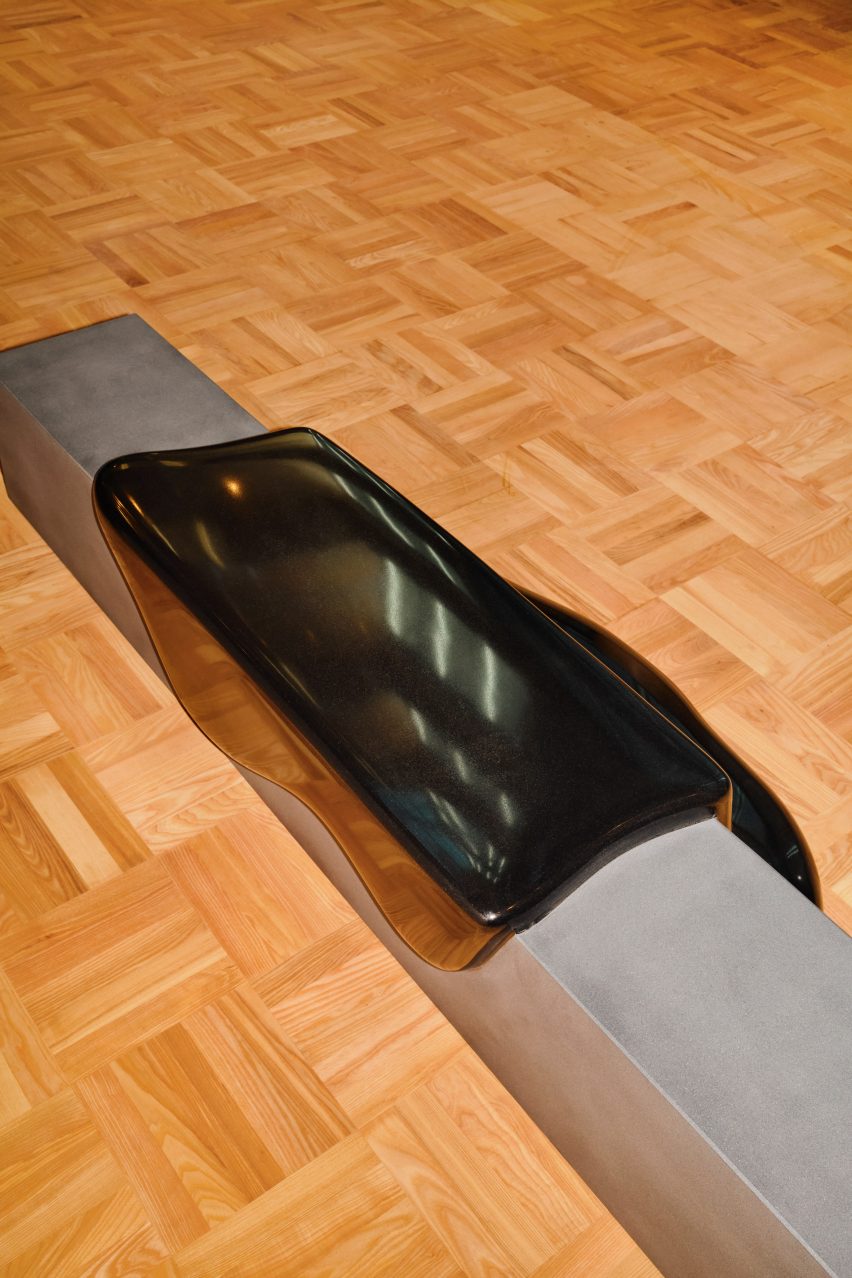
“Since electricity and magnetism are essentially two aspects of the same thing – and E.ON being an electric utility company – we thought it suitable to introduce magnetism as a modelling tool,” Landström and Isaksson Pirtti explained.
“The shape of the piece comes from dropping a lump of magnetic slime on top of a conductive material,” they added. “The slime seemingly randomly slump and drapes over a metal bar before settling in its final shape.”
Lab La Bla then scaled this shape up and hand-sculpted the shape from a single block of diabase, which was finally sandblasted and polished.
“We see this process as an adventurous exploration in making a physical representation of the invisible force that shapes our world,” Landström and Isaksson Pirtti added.
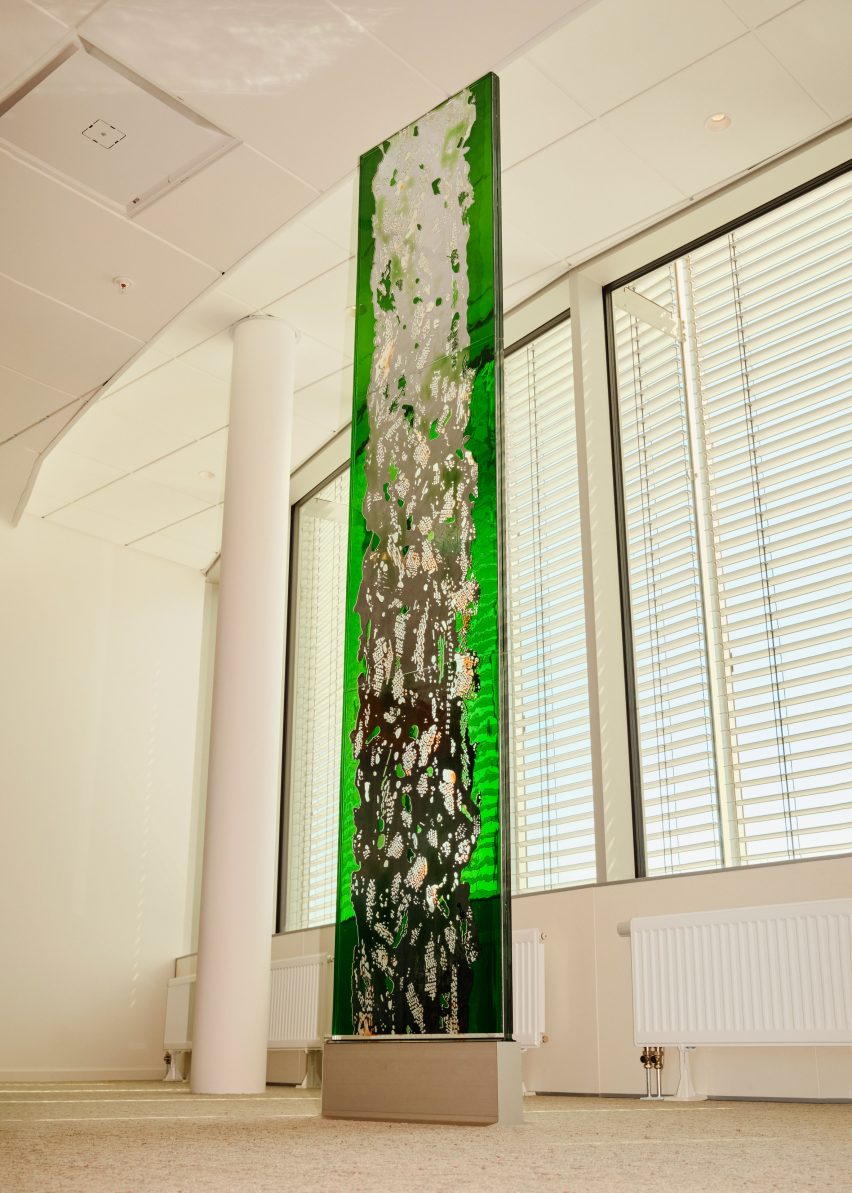
The studio also turned brick beams, left over from the construction of a school in Malmö in the early 1900s, into umbrella stands, and sourced mouth-blown glass panels from one of the few remaining producers of the material.
This was used, together with dichroic glass, to create a three-metre-high glass sculpture with a graphic pattern that depicts a CT-scan of a wood-fibre material.
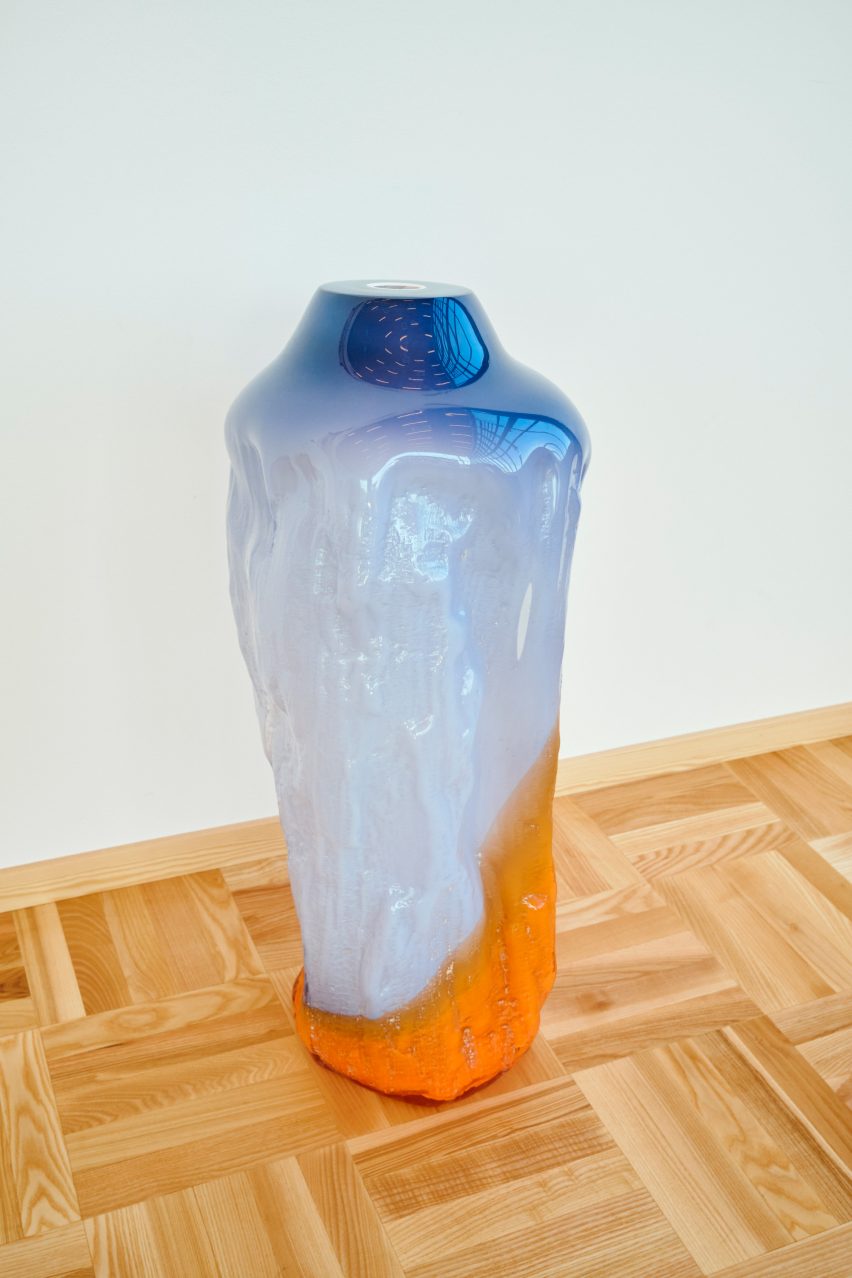
Lab La Bla also created decorative vases and glass sculptures using molten glass blown into tree trunks that had been hallowed by fungal decay. The trunks were sourced from E.ON’s own local heating centre.
These trunks “serve no industrial purpose, but are burnt for energy by E.ON and used for teleheating for Malmö,” the studio said.
“We borrow these tree trunks to blow glass in them, before returning them to their final purpose.”

In the headquarters’ lounge areas, the designers created modular sofas made from ground-down wine corks sourced from restaurants.
“The modular cork sofa uses a unique process where 100 per cent recycled cork is sprayed onto a foam structure, proudly incorporating signs of imperfection into the design while bringing superior durability and sustainability to your furniture,” Landström and Isaksson Pirtti said.
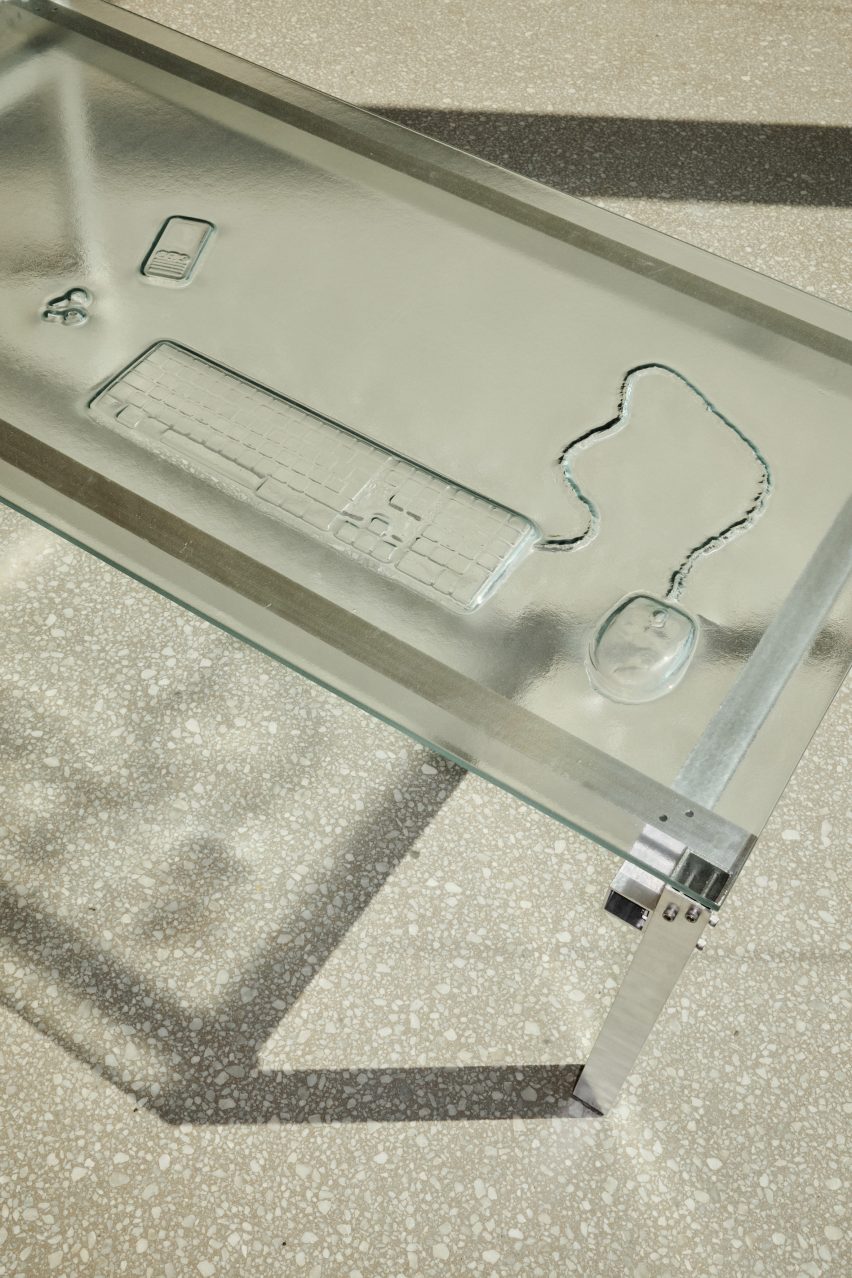
To the designers, the aim of the interior design was to use disused or forgotten materials, as well as ones that were recycled and recyclable.
“We took a conscious decision of picking hyper-ordinary materials such as MDF and aluminium to pinpoint and educate people about cyclic and sustainable qualities inherent in the processes of creating these materials,” the studio said.
“We often try to celebrate the beauty and intrinsic qualities of everyday, industrial materials otherwise consigned to temporary or low-cost construction solutions,” it added.
“We wanted to design objects which require significant time and skills from craftspeople, usually reserved for expensive, rare and high-quality materials – to some of the very inexpensive and found materials that we used throughout the project.”
Lab La Bla’s designs have previously been shown at the Moving Forward exhibition at Stockholm Design Week and as part of the Metabolic Processes for Leftovers exhibition in Malmö.
The photography is by Lars Brønseth.

